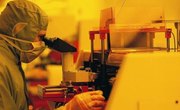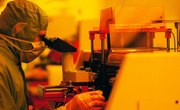Developing keen powers of observation will enhance your ability to conduct research. In the same way that detectives look for clues, natural and social scientists train themselves to spot small details that the average person might overlook or dismiss as inconsequential. Many scientific breakthroughs happen because researchers notice and analyze small incremental changes when variables are controlled and manipulated. Social scientists use field notes to log their observations in an attempt to make sense of cultural phenomena, like the 2016 Pokemon Go craze.
Tip
Qualitative observation generates a hypothesis, whereas quantitative observation tests an existing hypothesis.
Understanding the Scientific Method
The scientific method was developed and refined over multiple centuries by scientists and philosophers searching for evidence-based answers to questions and problems. Rationalism slowly replaced commonly held myths and superstitions. Today, the scientific method is the gold standard for conducting laboratory research in fields like biology, chemistry and physics. Scientists rely on their observation method along with logic and inference to develop and test hypotheses and theories.
You may have used the scientific method without even realizing it. The process starts when you make an observation, question what you’re seeing, come up with an educated guess about cause and effect and then test out your idea of what’s going on. After further observation and analysis, you finally draw a conclusion.
Example:
- Observation: The temperature is below zero, your car won’t start and your dome light was on.
- Question: Why won’t the car start?
- Hypothesis: The car battery is drained and needs to be replaced or jump started.
- Prediction: The battery is new so a jump start should work.
- Experimentation to test hypothesis: Ask a friend to jump start the car.
- Observation and analysis: The car starts right up when your friend jumps the battery with jumper cables.
- Conclusion: You accept your original hypothesis.
Using Observation in Science
Observational research methods are critical to the success of experiments. Students are more likely to understand and enjoy a science lesson that includes an observed demonstration. You may remember the classic erupting volcano experiment from science class. Children love to observe frothy carbon dioxide bubbles spewing from the peak of a model volcano as the result of an acid and base reaction of vinegar, soap and baking soda inside the volcano.
Of course, most lab experiments are less dramatic, but the same principles of observation apply. You must pay close attention to any changes in color, form, odor, temperature, size and movement, for instance. Careful notes must be maintained for use in analysis. Write down everything because you may not realize its significance at the time of observation.
Making Observations in Quantitative Research
Objective observation is critical when conducting quantitative research such as laboratory research. Objectivity is important because researcher bias can affect the reliability and validity of experimental findings. Researchers follow the scientific method precisely in a controlled environment. For instance, microbiologists observe and measure bacteria growth in a petri dish at varying temperatures noting size, shape, odor and color.
When using scientific instruments, calibrations and measurements must be exact, or conclusions will be flawed. Careful attention must be paid to small details such as dust in a beaker, which could introduce contaminants. In fields like psychology, human subjects may consent to participate in research studies that often involve behavioral observations or completing questionnaires that are statistically analyzed. Objective observations control researcher bias and produce findings that can be replicated by others following the same steps. Scientists continually seek new knowledge that supports or refutes prevailing theories.
Making Observations in Qualitative Research
Subjective observation is part of the process when conducting qualitative research. Researcher bias is acknowledged and discussed. Social scientists in fields like social work and ethnography seek to understand and make meaning of the human experience. Observation occurs in naturalistic settings, such as observing a toddler at home, interviewing inmates or facilitating a cancer survivor focus group.
Participant observations involve immersion experiences, such as living among indigenous people in a remote area. Emotions, values, beliefs, norms, dress, body language and cultural practices are observed and documented. Observations are recorded in detailed logs, journals and transcripts and then analyzed for common themes. Observations help researchers form impressions that result in a rich description of people or social concerns.
Related Articles
References
Writer Bio
Dr. Mary Dowd is a dean of students whose job includes student conduct, leading the behavioral consultation team, crisis response, retention and the working with the veterans resource center. She enjoys helping parents and students solve problems through advising, teaching and writing online articles that appear on many sites. Dr. Dowd also contributes to scholarly books and journal articles.











